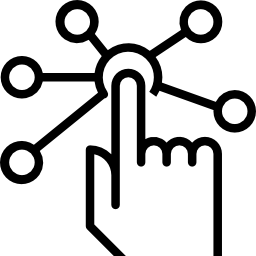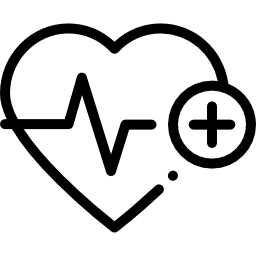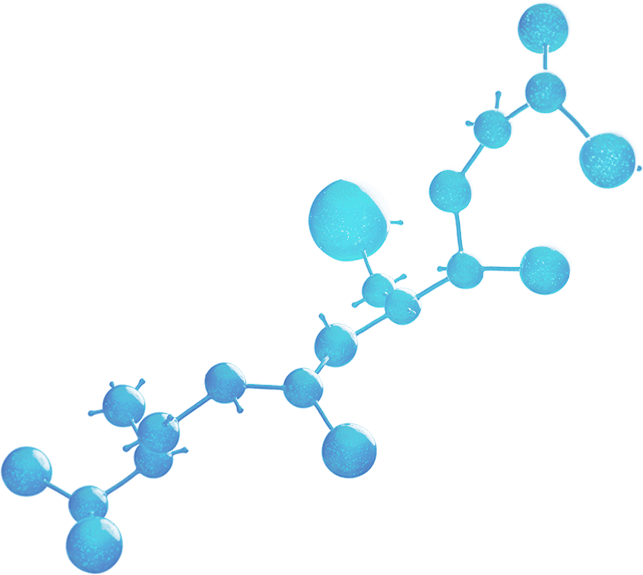Peptide therapy is a medical approach that involves the use of peptides to treat various health conditions and optimize bodily functions. Peptides are short chains of amino acids, and they can have specific effects on the body when administered in a controlled and targeted manner. Peptide therapy has gained attention in the fields of medicine, anti-aging, and sports performance for its potential benefits.

Peptide therapy involves the use of specific peptides that have been identified for their ability to influence particular physiological processes. These peptides can target various systems in the body, including the endocrine system, immune system, and nervous system.

Peptide therapy is often tailored to the individual's specific needs and health goals. Medical professionals may perform tests and assessments to determine which peptides may be most beneficial for a particular patient.

Peptide therapy is used for a wide range of purposes, including hormone regulation, immune system modulation, anti-inflammatory effects, tissue repair and regeneration, weight management, and cognitive enhancement, among others.

Many peptides used in therapy are bioidentical, meaning they are structurally similar to naturally occurring peptides in the body. This similarity can enhance their safety and effectiveness.

Peptides can be administered in various ways, including through injections (subcutaneous or intramuscular), nasal sprays, oral capsules, and topical creams. The method of administration depends on the specific peptide and its intended therapeutic effect.

Peptide therapy is used in clinical settings for conditions such as hormone imbalances (e.g., growth hormone deficiency, thyroid disorders), autoimmune diseases, chronic inflammation, and age-related issues, including the management of age-related muscle loss and skin rejuvenation.

Peptide therapy has gained popularity in the anti-aging and wellness industries due to its potential to address age-related concerns, improve overall well-being, and enhance physical performance.
BPC-157 not only prevents stomach ulcers but is also an incredibly potent catalyst in healing inflammatory bowel syndrome (IBS). Peptide
BPC-157 has been shown to accelerate wound healing not only at the surface—where it can treat skin burns, improve blood flow, and increase collagen production—but also repair ligament and tendon-to-bone damage.
Relief from discomfort has been observed in people who have:
This peptide reduces injury recovery times, decreases inflammation, and protects the heart. Along with these amazing healing properties, BPC-157 has several other life-changing benefits.
While experts focus on using BPC-157 for healing the gut and speeding up recoveries, there are many other benefits including improved:
• Brain cognition
• Serotonin production
• Heart protection
• Urinary incontinence relief
• Hormone production in the hypothalamus/pituitary gland


These natural healing effects are just a few of the reasons why BPC-157 can help you improve your daily health and wellness. At AgeRejuvenation, a medical professional will explain how this peptide therapy can transform your life.
Although the research is ongoing and ever-changing, there have been no reported side effects. However, it is recommended you talk to your physician to determine whether a peptide injection or oral dose can interact with any prescription medications you take.
Just like with any injection, minor symptoms can include:
This peptide is deemed an incredibly safe and effective FDA-approved treatment option, especially when combined with a proper diet, exercise, and any treatments recommended by your healthcare provider.
Peptide CJC 1295 was originally made to treat diseases, but has been discovered to have performance-enhancing effects that appeal to athletes.
In simple terms, the peptide increases protein synthesis and insulin-like growth factor levels. This process enables muscle tissue to grow, thereby increasing muscle mass and function.
Ipamorelin is a hormone secretagogue, which means it helps excrete hormones into the bloodstream while simulating the pituitary gland to produce them. It serves other functions as well. For instance, Ipamorelin is associated with:
When combined with CJC 1295, the powerful benefits are only exaggerated and the aging process is slowed by growth hormone secretion.
Both compounds act synergistically by stimulating the release of growth hormone by the pituitary gland—a process that declines with age. However, this process can be restored naturally even later in life.
So what are each of these compounds and how are they used for ultimately improving health? Keep reading to learn more about how these powerful treatments are used for longevity.
NAD+ (nicotinamide adenine dinucleotide) is a vital, naturally occurring molecule that has an essential role in many biological functions within the human body. Having adequate levels of NAD+ is critical for supporting healthy aging and avoiding age-related illnesses.
However, as people grow older their natural ability to produce enough of this critical molecule diminishes significantly. This decline has been linked not only to general signs of aging but also specific conditions like cardiovascular disease or neurodegenerative disorders such as Parkinson’s Disease and even Alzheimer’s disease. Other factors, like chronic inflammation, oxidative stress, and exposure to environmental toxins, can further accelerate the depletion of NAD+ levels.
One promising approach for increasing the supply of vital NAD+ molecules within our bodies is through oral supplementation with nicotinamide riboside (NR).
HOW NAD+ SUPPLEMENTS WORK
NR is an NAD+ precursors, meaning it can be converted into the compound within the body to increase levels. This impacts NAD+ production in several ways:
Sermorelin is a growth hormone-releasing hormone (GHRH) similar to the hormone that your body produces naturally. It is often used to treat growth hormone deficiency in children and adults because it comes with significantly fewer potential risks than hormone replacement therapy.
Sermorelin is a peptide hormone that is structurally similar to growth hormone-releasing hormone (GHRH). It is typically used to treat growth hormone deficiency in children and adults. It can also be used for other conditions, such as improving wound healing, reducing fat mass, and increasing muscle mass.
Sermorelin works by mimicking the action of GHRH and by binding to receptors in the brain that trigger the release of growth hormone. It is important to note that sermorelin is not a growth hormone itself, but rather it stimulates the body’s own growth hormone production.
When injected into the body, it causes the release of growth hormone from the pituitary gland. Sermorelin injections help to counteract decreases in muscle mass and bone density by stimulating the body’s natural production of growth hormone.Sermorelin therapy is a relatively new anti-aging therapy. However, some studies have already shown that sermorelin therapy is safe and effective for restoring normal growth hormone levels in adults.
In a recent study, a group of middle-aged and elderly individuals was given sermorelin therapy for a period of six months. At the end of the study, the participants experienced significant improvements in their physical and mental health, as well as in their overall sense of well-being.
The participants in the study reported feeling more energetic, sleeping better, having better skin and hair, and feeling more mentally sharp. They also reported a decrease in wrinkles, joint pain, and body fat.
Sermorelin therapy is an increasingly popular anti-aging treatment, and for good reason. It can improve our overall health and well-being as we age. By injecting sermorelin, we can help to restore the levels of growth hormone in our bodies, which can lead to a number of anti-aging benefits, including:
MOTS-c is a peptide that consists of 16 amino acids and is expressed by a mitochondrial gene. With the mitochondria as an important site for ATP production and fatty acid oxidation, MOTS-c plays a crucial role in promoting metabolic homeostasis throughout the entire body.
The body naturally stores a certain amount of fatty acids, amino acids, and glucose, which it uses to function optimally. However, when we eat too many calories or are inactive, metabolic dysfunction can occur. Weight gain is a common side effect of metabolic dysfunction, in addition to the development of metabolic-related health conditions, such as type 2 diabetes.
MOTS-c, with its ability to promote metabolic homeostasis, can help fix metabolic dysfunction and promote metabolic flexibility. However, as a mitochondrial-derived peptide, the amount of MOTS-c in the body is reliant upon mitochondrial biogenesis, or the process by which cells increase their number of mitochondria. Mitochondrial biogenesis decreases with age, which is why MOTS-c production also declines with age.
For those experiencing age-related declines in MOTS-c, peptide therapy is available to increase MOTS-c levels, producing benefits such as:
Research Into the Effects of MOTS-c Peptides
Many of the benefits of MOTS-c peptides stem from their ability to activate the AMP-activated protein kinase (AMPK) pathway through skeletal muscle, which research has shown is one of the major targets of MOTS-c peptides. Some benefits of the activation of the AMPK pathway include enhanced insulin sensitivity and increased glucose uptake in muscle cells, two actions that can help promote better blood sugar level control.
The AMPK pathway can also stimulate the proliferation, differentiation, and mineralization of osteoblasts, or the cells that form bone. Since MOTS-c stimulates the AMPK pathway, they also promote the production of bone cells, which can help combat osteoporosis. A 2016 study also found that MOTS-c can help suppress bone loss due to ovariectomy, or the surgical removal of the ovaries.
Research into the effects of MOTS-c peptides on mice have also shown its ability to increase physical capacity and health span. Even more interesting is that the study used late-life mice, showing that MOTS-c offered these benefits for an older population.
The above study also found that the increased physical capacity and longer time spent healthy observed in the mice occurred because MOTS-c regulated nuclear genes (including those related to protein regulation and metabolism), skeletal muscle metabolism, and myoblast adaptation to metabolic stress.
Additionally, the study found that, in humans, exercise induces MOTS-c expression, which suggests that MOTS-c is an exercise-induced peptide, and supplementing with it can produce similar effects on the body as exercise. Essentially, MOTS-c can make the body think it is exercising, even when it is not. This ability can also aid weight loss, with a study on mice showing that treatment with MOTS-c helped to address diet-induced obesity.
Other exercise-based benefits of MOTS-c observed in studies include fatty acid oxidation and mitochondrial biogenesis. While declining mitochondrial biogenesis with age causes MOTS-c production to decline, it also causes mitochondrial dysfunction, especially in heart, skeletal muscle, and brain tissues that require high amounts of energy. However, increasing mitochondrial biogenesis through MOTS-c peptides can reverse the mitochondrial dysfunction and boost cellular function by increasing energy availability.